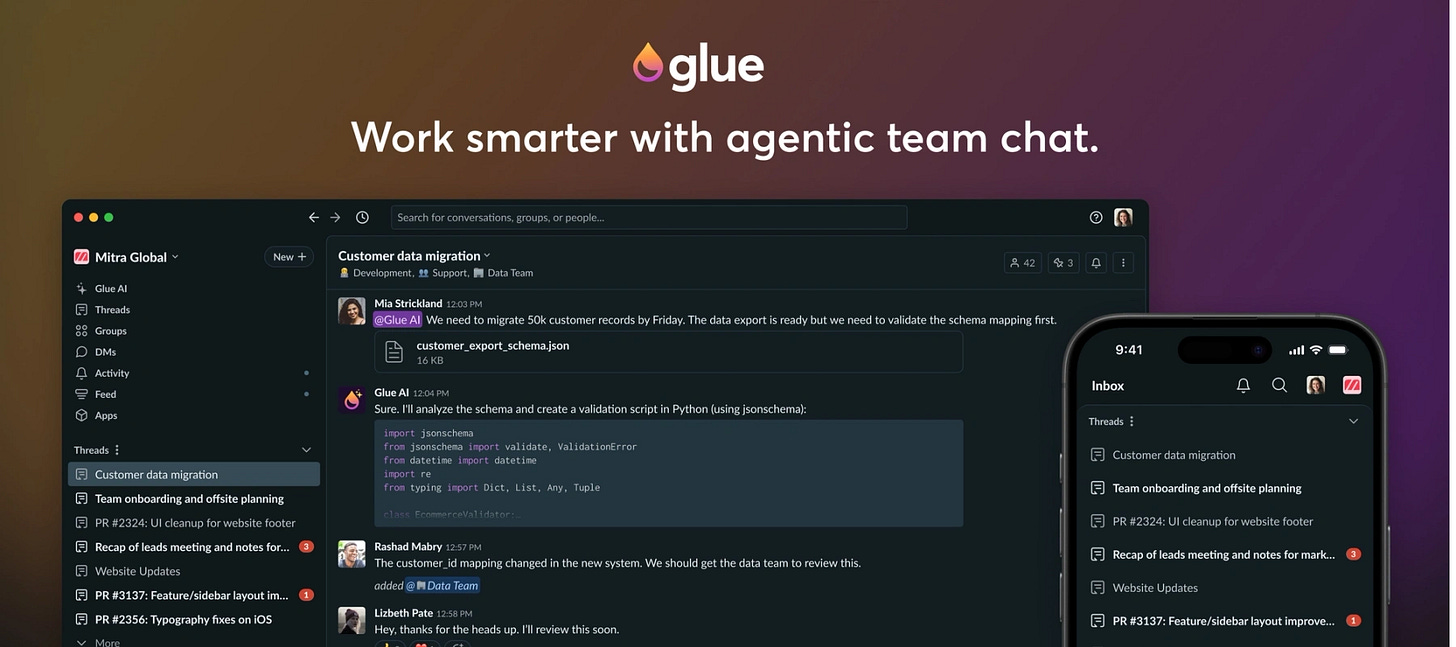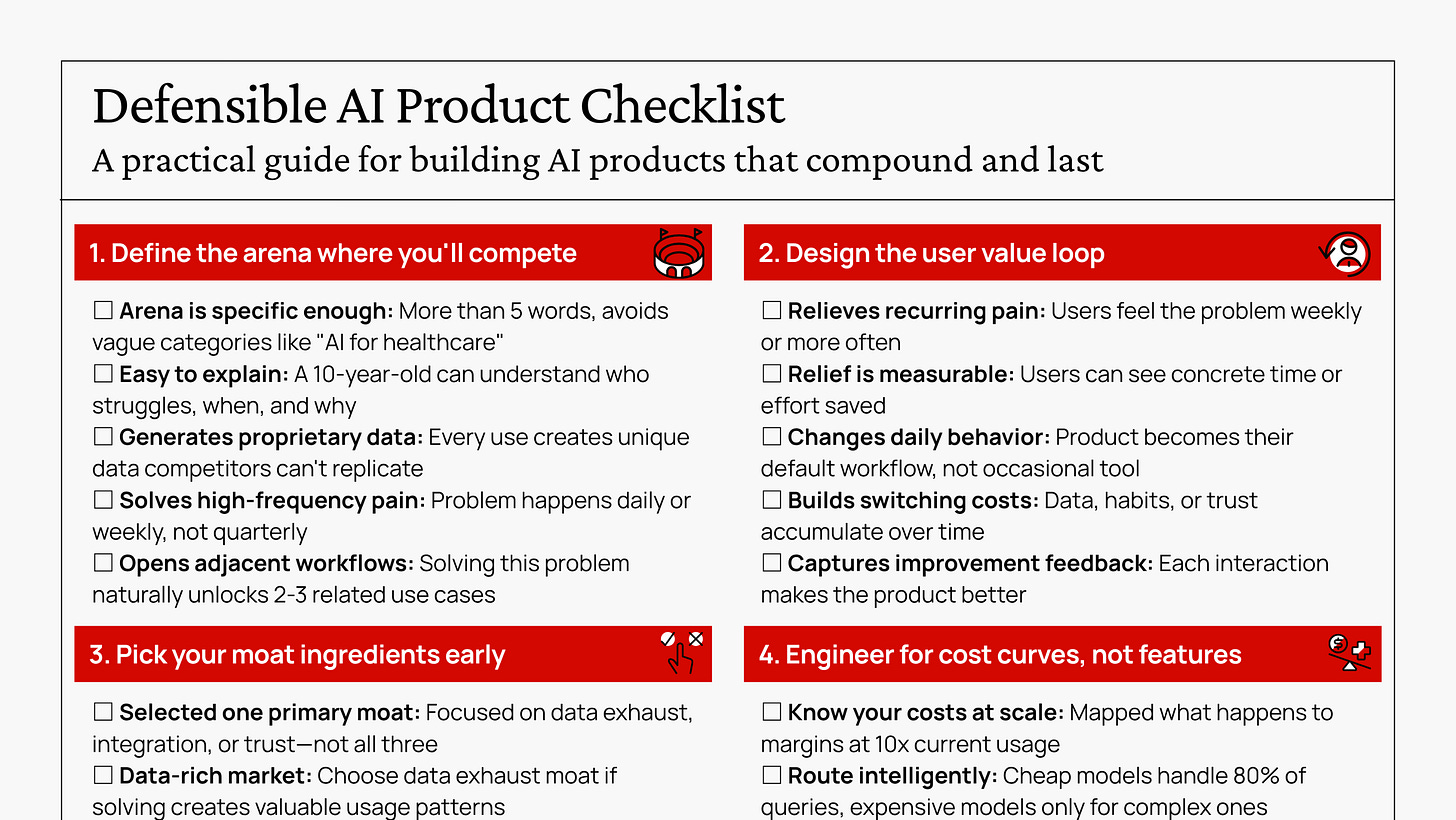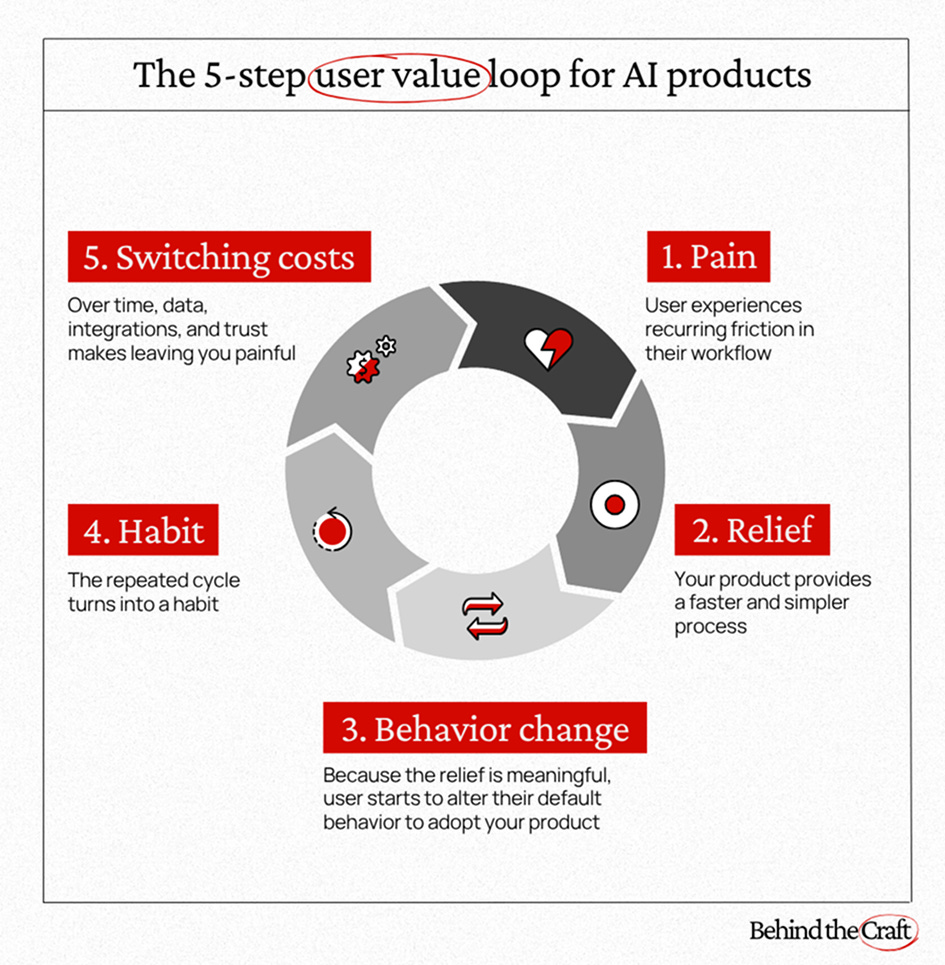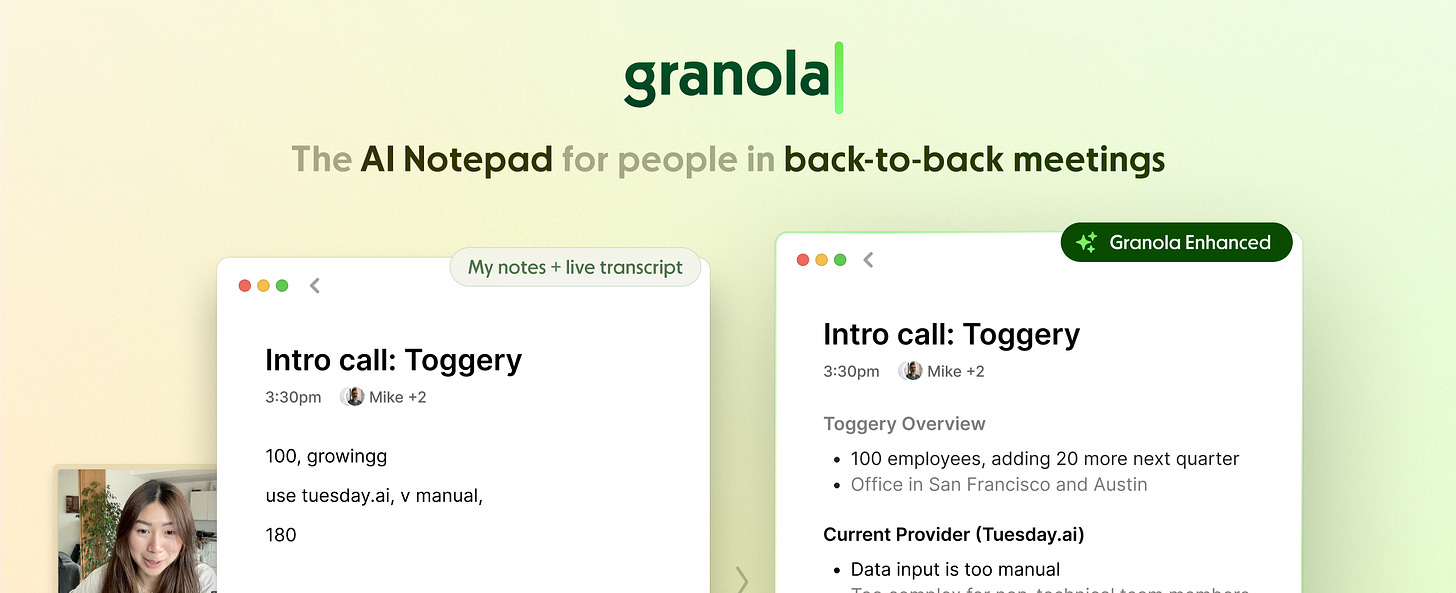Expensive subscribers,
As we speak, I need to share a deep dive on the right way to construct defensible AI merchandise.
The graveyard is affected by AI merchandise that acquired copied, misplaced their customers, and burned by means of their funding with out constructing moats.
That’s why I’m excited to ask Miqdad (OpenAI product chief) again to share his detailed 7-step playbook to construct AI merchandise that stick:
-
Outline the world the place you’ll compete
-
Design the consumer loop (not the AI loop)
-
Decide your moats early
-
Engineer for value curves, not options
-
Construct your adoption wedge
-
Design your suggestions flywheel
-
Scale by means of techniques, not heroics
It is a 4,000-word deep dive taken instantly from Miqdad’s AI Product Technique course (final cohort begins on October 20). Get $550 off the complete course with my hyperlink beneath and the primary 100 sign-ups will even get a private technique evaluate from Miqdad.

Because of Glue for sponsoring this article!

Staff chat hasn’t modified a lot in a decade. It’s nonetheless cluttered, disconnected, and onerous to focus.
Glue is rethinking what chat could be if AI is constructed proper into the dialog. It connects on to your instruments by means of MCP, so your staff can plan, collaborate, and take motion with out switching context or shedding focus. Attempt agentic staff chat beneath.

In conventional SaaS, velocity to market gave you an actual edge. Ship quick, lock in prospects, and broaden earlier than opponents catch up.
However in AI, velocity with out defensibility simply makes you the primary goal. So as a substitute of simply being first, you should depend on what compounds uniquely for you:
-
Knowledge flywheels: Each AI chat generates proprietary information.
-
Workflow integration: Your AI sits inside core workflows, not on the aspect.
-
Belief & governance: In regulated industries, by no means shocking regulators is a moat.
-
Iteration velocity: The sooner you iterate and be taught, the additional you outrun rivals.
These moats create distance between you and opponents that widens with each new consumer, dataset, and suggestions loop. So let’s cowl 7 steps to construct an AI technique that can win the lengthy recreation.
The #1 mistake I see in AI product technique is when leaders goal a broad market as a substitute of a particular enviornment.
I’m positive you’ve heard leaders make broad claims like “We’re constructing AI for healthcare / e-commerce / schooling.” As a substitute, defensibility comes from focus.
Run your required enviornment by means of three filters:
-
Excessive-frequency ache: Decide an enviornment the place the issue occurs continuously, not sometimes. “This wastes me half-hour a day” beats “that is annoying as soon as 1 / 4.” Defensibility comes from embedding inside each day workflows.
-
Knowledge exhaust: Does fixing this downside generate information that improves the answer over time? Exhaust is structured, high-signal information created from each use. With out it, scale provides value. With it, scale turns into a flywheel.
-
Adjacency potential: Your enviornment is your beachhead. Decide a place to begin that opens doorways to adjoining workflows. Mastery of 1 slender downside offers you credibility, belief, and information to unlock the following two or three.
When unsure, use this enviornment check:
-
In case your enviornment definition is beneath 5 phrases (e.g., “AI for advertising and marketing”), it’s too broad.
-
In case your enviornment can’t be defined with a single instance of who struggles, when, and why, it’s too summary.
-
In case your enviornment doesn’t naturally generate proprietary information, it’s not defensible.

Instance: Clay
Clay launched as an AI-powered relationship intelligence as a substitute of “AI for gross sales.” They pulled collectively fragmented contact information throughout instruments (LinkedIn, e mail, CRMs) right into a residing system of report. By fixing a high-frequency ache for gross sales, Clay (now valued at $3.1B) created a knowledge benefit that compounded over time.
-
Chasing TAM too early. Leaders say, “But when we do AI for e-commerce, that’s a $10B market!” Sure, however you’ll die within the noise. TAM is a lagging metric. Begin with probably the most acute, winnable wedge.
-
Copying opponents. In case your enviornment is outlined by what’s trending on X (like “agentic AI workflows”) you’re already too late. By the point you see it, a dozen startups have already shipped it.
-
Mistaking workflow adjacency for buyer adjacency. Simply because medical doctors want insurance coverage letters and diagnostic notes doesn’t imply it is best to do each. One is a high-frequency admin burden (insurance coverage letters). The opposite is a regulated, life-critical activity (diagnoses). Decide one enviornment to concentrate on first.
Don’t transfer ahead till you outline your enviornment clearly. Get it improper, and each step after is a home constructed on sand.
One of many largest traps is obsessing over the AI loop as a substitute of the consumer loop.
You’ve in all probability spent hours refining prompts and tweaking evals — in any case, they’re the engine of your AI product. However customers don’t reside in your engine room. They don’t care that you simply improved your eval scores by 2%.
Customers care about one factor: Did my life get simpler, sooner, or higher in an apparent approach?
Defensibility begins once you cease designing for the AI loop (immediate → inference → eval) and begin designing for the consumer loop.

Right here’s how the loop works:
-
Ache: The consumer experiences a recurring friction of their workflow.
-
Aid: Your product supplies a sooner, easier, or extra correct course of.
-
Conduct change: As a result of the reduction is significant, the consumer begins to change their default conduct to undertake your product.
-
Behavior formation: The repeated cycle turns right into a behavior.
-
Switching prices: Over time, the info, integrations, and belief that you simply’ve constructed into this loop make leaving you painful. That’s your moat.
As we speak’s “state-of-the-art” AI loops turn into tomorrow’s baseline. A rival can all the time replicate your prompts or swap in a greater mannequin.
Person loops are what drives retention. When you’ve rewired consumer conduct round your resolution, you’ve created inertia. And inertia is the strongest type of defensibility in AI.
Consider Slack. Was its defensibility actually “a chat app”? No. It was its consumer loop: Staff messages → Instantaneous collaboration → Groups cease emailing → Electronic mail declines → Slack turns into the default.
As soon as Slack’s consumer loop kicked in, opponents weren’t combating a chat characteristic. They had been combating a behavior.

Instance: Granola
Granola is an AI notepad for conferences. The plain pitch may have been “AI transcription,” however transcription alone is simple to repeat and doesn’t create stickiness. As a substitute, Granola designed a powerful consumer loop:
Ache: Professionals waste hours each week re-reading assembly transcripts, cleansing up notes, and monitoring motion gadgets.
Aid: Granola routinely produces clear notes from conferences.
Conduct change: Customers cease taking guide notes and depend on Granola.
Behavior: Each assembly is funneled by means of Granola, making it a each day workflow.
Switching value: Over time, Granola turns into the system of report for assembly historical past and structured motion gadgets – information no competitor can simply replicate.
Granola exhibits that defensibility doesn’t come from the AI mannequin itself. It comes from designing loops the place ache turns into reduction, reduction modifications conduct, conduct types habits, and habits generate information that compounds right into a moat.
-
Anchor on reduction, not “wow”: Cool demos get consideration. However solely repeatable reduction builds loops. Ask: What’s the 30-minute ache I can reduce to three minutes?
-
Make reduction seen: Customers usually neglect the ache as soon as it’s solved. Remind them. “You saved 22 minutes this week.” Visibility reinforces conduct change.
-
Tighten the suggestions cycle: The shorter the cycle between ache and reduction, the sooner the behavior types. Each day loops beat weekly loops; weekly beats month-to-month.
-
Shut the emotional loop: Aid is emotional. Customers need to really feel smarter, sooner, or extra in management. The very best AI merchandise reward them with each outcomes and id reinforcement.
When unsure, use the consumer loop check:
-
Does my product relieve a ache the consumer feels a minimum of weekly?
-
Is the reduction seen and measurable?
-
Does the reduction trigger customers to change conduct (not simply click on as soon as)?
-
Can the loop generate switching prices over time (information, habits, belief)?
If the reply to any of those is “no,” you don’t have a defensible product but.
The brutal reality is that in AI, options are disposable.
Anybody can copy your immediate template or wrap a mannequin in a slick UI.
What they can’t copy in a single day are the moat substances you bake into your product from the very starting.
Too many leaders consider moats as one thing you add later when you scale. By then, it’s too late. In AI, you construct your product together with your desired moat in thoughts.
After a decade engaged on AI merchandise, I’ve discovered there are solely 3 moats that matter:
Elevate your perspective with NextTech Information, the place innovation meets perception.
Uncover the most recent breakthroughs, get unique updates, and join with a world community of future-focused thinkers.
Unlock tomorrow’s developments immediately: learn extra, subscribe to our e-newsletter, and turn into a part of the NextTech group at NextTech-news.com

